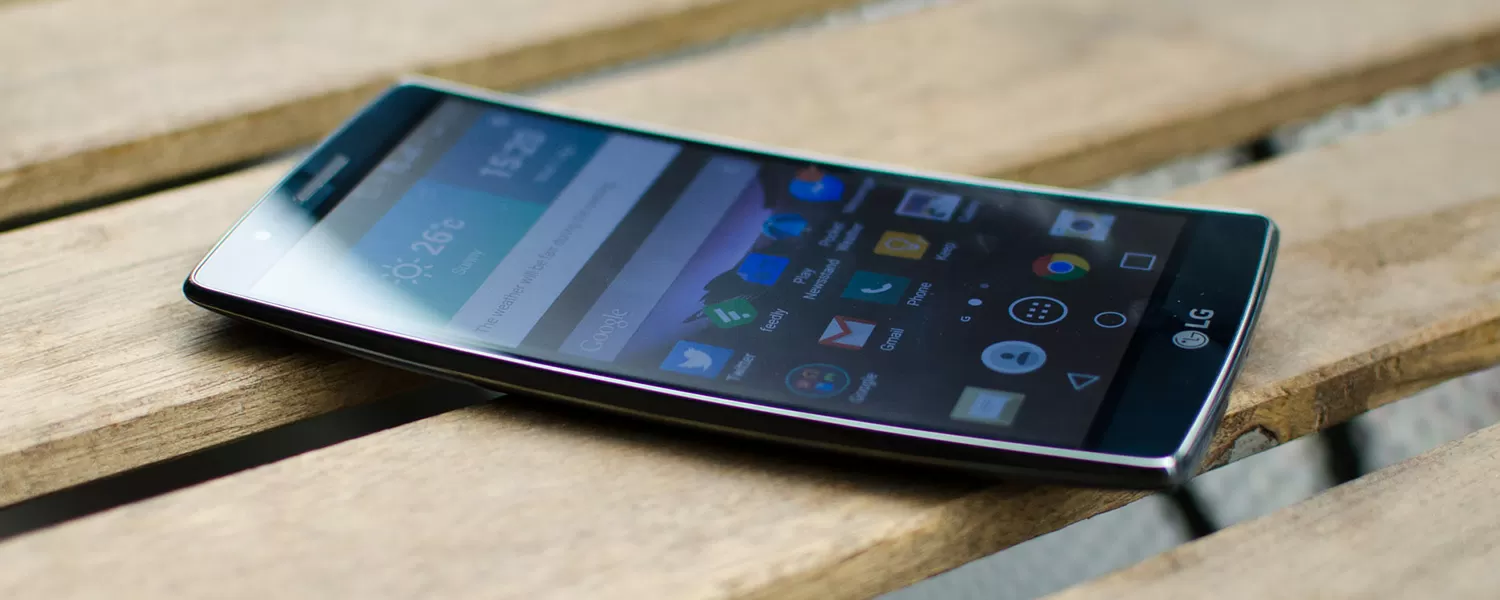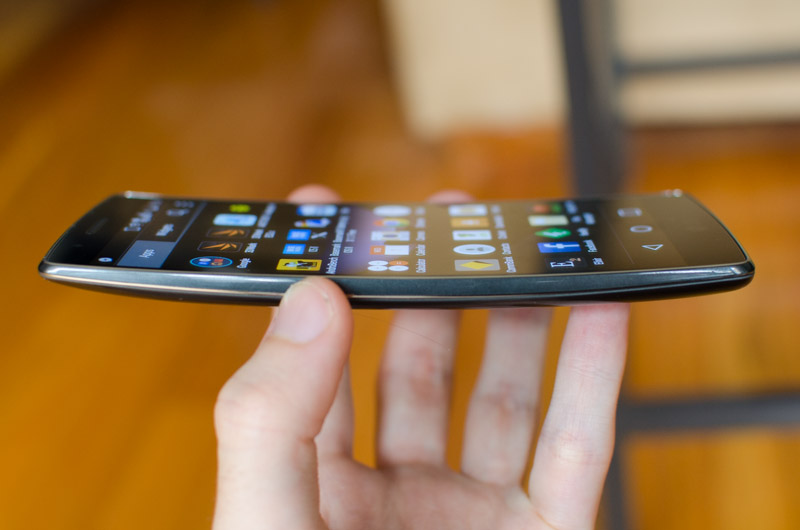The Curved P-OLED Display
As you might have gathered already, the LG G Flex 2 comes with a 5.5-inch curved P-OLED display with a resolution of 1920 x 1080. Although this display is smaller than the 6.0-inch monster in the original G Flex, the increased resolution (up from 720p) goes a long way to producing sharper, crisper imagery and text. At 400 PPI, this display looks significantly better than its predecessor, and although it doesn't reach the monstrous densities of recent 1440p displays, it still looks great in its own right.
The curve is achieved through LG's plastic OLED technology, which can also be used for flexible displays. Like many OLEDs of this resolution, a PenTile subpixel matrix is being used, although you'll be hard pressed to notice the effects. I did notice, however, subtle graininess in the display's picture, not caused by the display itself, but by one of the layers between the display and the outside world. Although the graininess is hard to spot unless you look closely, and doesn't hugely affect picture quality, it's not something I've seen on smartphone displays before. This leads me to believe it's due to the construction of the curved display.
Does the curved display provide a better viewing experience than a flat display? Well... no. Like with televisions - and manufacturers will disagree with me here - there is really no benefit to a curved display at standard viewing distances and sizes. The small radius of curvature introduces distortion to flat images, though it's not really significant enough to kick up a fuss. For using apps, playing games, browsing the web, and even viewing photos and videos, the curved display of this smartphone provides a similar experience to the standard flat displays we've been using for years.
Although OLED displays have their downsides, there are plenty of reasons to like the panel used in the G Flex 2. Colors are vivid, as you would expect from this type of display, with oversaturation that wouldn't go astray in a Samsung device. You can alter the color profile from 'standard' to 'vivid' or 'natural' in the display settings, and while natural is the most accurate in its color reproduction, I prefer to leave it on standard to get a vivid picture without going overboard.
Of course, like all OLEDs, blacks are extremely deep and contrast is outstanding. The overall tone of the display is reasonably balanced, although whites don't quite reach an ideal 6500K color temperature. Viewing angles are also excellent, which is key for a curved display that will have parts often viewed at off-normal angles. There is a slight tone shift at angles beyond 45 degrees, though there is hardly any tone shift or reduction in general viewability even at acute angles.
Peak brightness levels are good but not great from the G Flex 2's AMOLED, which can make outdoor viewing a little difficult in comparison to similar LCD panels. LG hasn't implemented a software-based artificial brightness booster, which might have improved the viewability in some circumstances. Minimum brightness isn't as low as I'd like, though it's fine for use at night without worrying about burning your retinas out.
The LG G Flex 2 uses on-screen navigation buttons, and like previous LG flagships, the order and amount of buttons can be customized in the device settings. As well as the standard home, back and recent tasks buttons, you can add in a notification tray button, a QuickMemo+ button, a dual window button, and a QSlide button. I didn't feel the need to add any of these buttons to the navigation bar while I was using the G Flex, although if you're a frequent user of these features, it may be worth your while.




